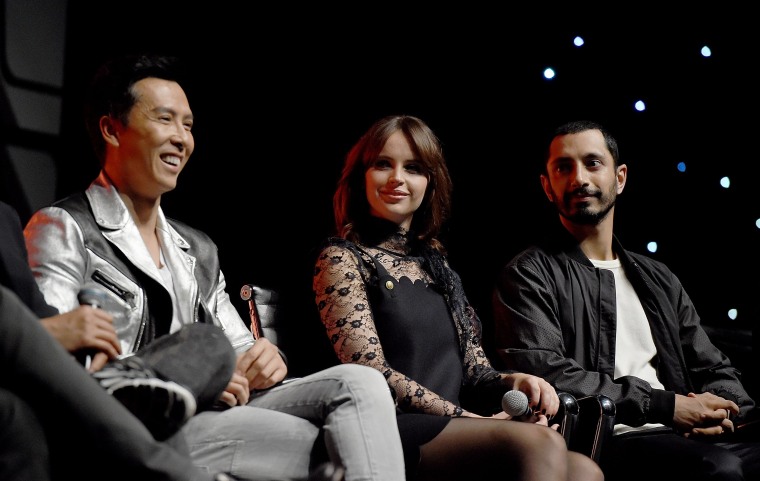It’s been four decades since “Star Wars: Episode IV — A New Hope” (1977) debuted, introducing audiences to the expansive space opera set a long time ago, in a galaxy far, far away — and ushering in one of the most successful movie franchises in entertainment history.
“I’m so proud of 'Star Wars' as it is, and the fact that it’s making a concerted effort to be more inclusive and be more representative. Because it’s 'Star Wars.' It’s intergalactic."
In 2015, the “Star Wars” universe (including films, television, merchandise, video games and home entertainment) was estimated to be worth over $41 billion, more than both the “Harry Potter” and “James Bond” franchises combined, according to Fortune.
But it’s not all jedis and wookies. Spinoff series and live action movies have helped with filling in gaps and plot holes in the “Star Wars” canon, like animated television series “Star Wars Rebels,” airing on Disney XD.
The show, which will air its fourth and final season this fall, is set between feature films “Episode III: Revenge of the Sith” (2005) and “A New Hope.”
“Just getting to be a part of the 'Star Wars' universe is not something most actors anticipate as part of their careers,” Tiya Sircar, who voices character Sabine Wren (a Mandalorian graffiti artist, a member of the same alien race as bounty hunter Boba Fett), told NBC News.
Sircar said she is also in awe of the wide range of fans, young and old, that the series attracts, including her own mother, an Indian immigrant and professor.
RELATED: ‘Star Wars’ Opened 40 Years Ago: Background Actors Recount How Movie Changed Their Lives
“[When] I got this job, she sort of started getting more and more interested in not just our show but 'Clone Wars' and the feature films. Now she’s a bonafide 'Star Wars' fanatic. She’s like that person that’s on all the chat forums,” she said laughing. “It’s just proof that people of all ages and all backgrounds can come to 'Star Wars' at any point in their lives.”
And it would seem that the galaxy far, far away is also getting more diverse. Indian-American actor Janina Gavankar (“Sleepy Hollow,” “True Blood”) plays the lead character in upcoming video game “Star Wars Battlefront II.” Standalone feature film “Rogue One” starred one of the most diverse casts in the canon’s history, including actors Riz Ahmed, Jiang Wen, Donnie Yen, and Diego Luna.
RELATED: ‘Rogue One: A Star Wars Story’ Diversity a Selling Point
Some fans were especially moved by Luna’s character, Cassian Andor, retaining the actor’s Mexican accent throughout the film.
The second installment of the Star Wars sequel trilogy, “The Last Jedi,” is set to bow in theaters this December and will feature the franchise’s first Asian-American female lead, Kelly Marie Tran, a relative newcomer.
“Just getting to be a part of the 'Star Wars' universe is not something most actors anticipate as part of their careers.”
She will star alongside Oscar Isaac and John Boyega, with whom Tran shares the cover of Vanity Fair, one of four covers celebrating the franchise’s 40th anniversary. Her character will also have a sister, Paige, played by Vietnamese actress Veronica Ngo.
“I have to say, when I watched Rogue One, I got a little verklempt. I was like, ‘Look at this motley crew of people and the lead is a female and the rest of the dudes are all kinds ethnicities and skin tones,’” said Sircar. “I’m so proud of 'Star Wars' as it is, and the fact that it’s making a concerted effort to be more inclusive and be more representative. Because it’s 'Star Wars.' It’s intergalactic. The more people who look like everyone, the better.”
Follow NBC Asian America on Facebook, Twitter, Instagram and Tumblr.
